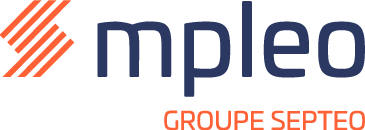
Agentic AI: definition, use cases and implications for the HR function
Since the rise of generative artificial intelligence, a new stage has captured attention: agentic AI. This concept, sometimes seen as abstract, is still often confused with LLMs (or language models) such as ChatGPT, Claude and Gemini. Yet talking about AI agents or autonomous AI agents refers to a different reality that deserves clarification to grasp its full potential.
For HR professionals, AI agents raise three questions: what is the definition of agentic AI? How does an AI agent actually work? And above all, which use cases are already emerging in the HR function?
This topic animated many exchanges at Septeo Future Insights HR 2025, where four experts debated the growing role of AI agents in transforming the HR function.

In summary:
- Agentic AI refers to systems capable of understanding an objective, making decisions and acting autonomously.
- These autonomous AI agents go further than traditional chatbots and assistants.
- The first HR use cases (recruitment, onboarding) exist, but remain limited and experimental.
- Their emergence already raises legal, organisational and cultural questions that directly concern HR Directors.
What is an AI agent?
At the Septeo Future Insights HR 2025 event, Lobna Calleja Ben Hassine, founder of Besoin de rien, envie d’IA, offered a simple and useful marker: “Agents understand their environment, make decisions and act autonomously.”
Definition of agentic AI
Agentic AI refers to artificial intelligence that is not only capable of understanding an instruction, but also of making decisions and acting autonomously to achieve an objective.
In practice, there are three tiers of AI:
- The bot follows a script. If the question does not exactly match what has been programmed, it is unable to answer.
- The assistant better understands natural language and draws on a document base. However, it remains passive and waits for the question.
- The AI agent crosses a threshold: it perceives context, plans, makes decisions and acts on tools (without human prompting at every step).
The three levels of artificial intelligence in practice
|
Level |
Description |
Main capabilities |
Autonomy |
Level of criticality |
| Bot | Follows a predefined script and only responds to exact requests. |
|
None: acts only on command | Low: Limited risk, low impact on human decisions |
| Assistant | Understands natural language and relies on a document base to formulate relevant answers. |
|
Medium: depends on human requests | Moderate: Risk of misinterpretation, depends on data quality |
| AI Agent | Perceives, plans, decides and acts within a given environment, without constant human intervention. |
|
High: can execute end-to-end tasks | High: Significant risk if unsupervised or if data are biased |
It is this capacity for autonomous action (and not merely “responding”) that distinguishes agentic AI and gives it relevance for certain HR tasks.
How does an AI agent work?
Concretely, the operation of an AI agent is based on four technological building blocks:
- Perception: it analyses the context and available data.
- Memory: it retains a history of interactions to improve.
- Planning: it breaks down an objective into logical steps.
- Execution: it acts concretely by interacting with other software (ATS, HRIS, training tools).
To illustrate this operation, imagine an autonomous AI agent receiving the objective of analysing applications and scheduling interviews, and carrying out the necessary actions without constant supervision.

AI agents: the first use cases applied to Human Resources
Agentic AI is still in its infancy, but several use cases applied to the HR function help to better understand what it can bring.
Agentic AI and recruitment: accelerating the initial stages
Recruitment involves repetitive tasks, ideal for an AI agent. These systems can analyse CVs, pre-select candidates and even attend interviews using a competency framework. During Septeo Future Insights HR 2025, Clément Gobet, Lead Scale-Up Manager & Community Ops at France Digital, shared a telling example: “Some companies are already using AI agents to automate the first stages of the recruitment process, such as interview screening. This allows them to finalise their hires in just 3 days, with a candidate experience perceived very positively by those concerned.”

Agentic AI and onboarding: supporting new employees
Another emerging application for AI agents is the integration of new arrivals. Autonomous agentic AI can build a personalised onboarding journey, recommend appropriate training and answer practical questions from day one.
In both examples, the goal is not to replace the human role but to complement it. HR and the manager remain at the centre of the relationship with candidates and new employees to build connection and engagement, while agentic AI frees up time, shortens recruitment timelines and makes the new employee’s daily life easier.
Questions already raised by agentic AI
Even if use cases remain limited, they are nonetheless promising. Above all, they show that agentic AI cannot be approached as a simple technological evolution. It raises questions that touch on law, organisation and corporate culture. In a word, governance.
- On the legal front, Alexandre Duprey, a lawyer at the Capstan firm, reminds us that “activities related to the recruitment of natural persons, the selection of profiles and all decisions that influence professional conditions, employment and dismissals, are categorised as high risk by the European AI Act. This legal framework places the HR Director at the very heart of the artificial intelligence reactor.”
- On the organisational front, responsibility is a key issue: who controls the agent? How far can decision-making be delegated to it?
- On the cultural and managerial front, the arrival of these “machine colleagues” is disrupting working relationships. How can these new actors be integrated within teams so that their presence is not only accepted, but also creates value for the company?
To remember
Agentic AI is only at its beginnings, but its first use cases in the HR sphere already show its potential. Autonomous AI agents are paving the way for a new way of designing HR processes: more fluid, faster, but also more complex to oversee.
For HR Directors, it is essential to understand today what agentic AI is, how it works and what it implies. Because beyond technological promises, it invites us to rethink the place of humans in the organisation and, more broadly, the corporate culture as a whole.

